About Cytotec for Ulcer Treatment and Prevention
Cytotec, also known as misoprostol, is a medication primarily used to prevent ulcers in the stomach and intestines. It belongs to a class of drugs called prostaglandin E1 analogs.
- The medication works by increasing the production of protective mucus in the stomach lining, which shields it from acid damage caused by other chemicals.
- Cytotec has been widely used for over three decades to treat various conditions related to ulcers and gastrointestinal diseases.
Benefits of Using Cytotec Online
When you buy Cytotec online, several benefits become apparent:
- Convenience**: Order from the comfort of your home, saving time spent on visiting a doctor or pharmacy.
- Discreet Packaging**: Receive packages unmarked and discreetly packaged to maintain confidentiality and respect patient privacy.
- Faster Shipping**: Take advantage of quick global shipping options that ensure timely delivery, often with tracking information provided for your security.
Treatment Options for Ulcer Prevention Using Cytotec
Cytotec is commonly used to treat:
- Peptic ulcers: These painful sores can develop in the stomach lining and intestines, often caused by Helicobacter pylori (H. pylori) bacterial infections or prolonged use of NSAIDs.
- Non-steroidal anti-inflammatory drug (NSAID)-induced ulcers: Common medications such as ibuprofen or aspirin can cause stomach irritation and lead to ulcer development.
Treating Peptic Ulcers with Cytotec
Cytotec effectively prevents the formation of new peptic ulcers in individuals at risk. This is particularly crucial for people who:
- Have a history of recurrent ulcers or gastrointestinal disorders.
- Aren't able to take other medications that can reduce stomach acid production, such as proton pump inhibitors (PPIs).
How Cytotec Helps with Ulcer Prevention and Treatment
The mechanism by which misoprostol prevents ulcers is multifaceted:
- Increased Gastric Mucus**: It enhances the production of protective mucus in the stomach lining, shielding it from acid damage.
- Reduced Acid Production**: By stimulating receptors in the stomach, Cytotec reduces gastric acid secretion, which can contribute to ulcer formation.
Frequency and Dosage Information for Buying Cytotec Online
To use misoprostol safely, consult your healthcare professional about recommended dosing schedules:
- The initial treatment typically involves taking a dose three times daily in the morning.
- For prevention purposes, once-daily administration is often sufficient, usually taken at bedtime to coincide with natural stomach rest periods.
Cautions and Potential Side Effects When Buying Cytotec Online
When using misoprostol for ulcer treatment or prevention, be aware of the following:
- Dizziness**: Some patients may experience dizziness upon standing from a sitting position due to changes in blood pressure.
- Diarrhea**: Mild gastrointestinal side effects like diarrhea can occur, but this is often manageable by adjusting dosing schedules or switching medication if necessary.
Precautions for Buying Cytotec Online During Pregnancy and Breastfeeding
Carefully consider potential risks when taking misoprostol:
- Pregnancy**: Misoprostol is contraindicated during pregnancy due to increased risk of uterine rupture.
- Breastfeeding**: Avoid using Cytotec if breastfeeding, as it may be present in milk and potentially affect newborns.
About Ulcer Treatment: Importance of Medical Consultation
To determine the most suitable treatment plan for your condition:
- Contact a healthcare professional before buying Cytotec online or starting any medication regimen.
- Undergo thorough medical evaluations to rule out potential complications related to ulcers, such as bleeding, perforation, or obstruction.
Finding Reliable Online Pharmacies for Buying Cytotec Safely
Evaluate online pharmacies based on the following:
- Professional websites with clear product information and expert customer support.
- Certifications from reputable organizations such as LegitScript or NABP, ensuring a high level of quality control and authenticity.
The Impact on Health When Buying Cytotec Online: What to Expect
Buyers must recognize the importance:
- Avoiding Counterfeit Medications**: Work with licensed online pharmacies that guarantee genuine product authenticity and avoid counterfeits.
- Prioritizing Ulcer Prevention**: Focus on adopting healthy habits and working closely with healthcare professionals to prevent ulcers in the first place, ensuring effective treatment strategies can be implemented as needed.
Reliable Resources for Buying Cytotec Online: Information and Tips
Stay informed through these valuable sources:
- The National Library of Medicine's MedlinePlus database offers comprehensive information on various medical topics, including misoprostol.
- The World Health Organization provides updates on global health initiatives, which might be related to the treatment and prevention of gastrointestinal disorders.
Why Buy Cytotec Online: Convenience Meets Quality Care
Earn peace of mind when choosing an online pharmacy for purchasing misoprostol:
- Accurate Dosing Schedules**: Ensure the correct dosage is prescribed and dispensed by a licensed healthcare professional.
- Discreet Shipping Options**: Protect your identity with discreet packaging that respects patient confidentiality.
Guidelines for Taking Cytotec: What to Keep in Mind When Buying Online
Treatment success relies on:
- Closely Following Dosing Instructions**: Administer the medication as prescribed by your healthcare provider, following any specific guidelines or recommendations.
- Attending Regular Follow-Up Appointments**: Schedule regular check-ins with a healthcare professional to monitor progress and adjust treatment plans if necessary.
Important Notes When Buying Cytotec Online: Understanding the Terms of Use
Know your rights as an online consumer:
- Patient Confidentiality**: Expect complete confidentiality during medical consultations, prescriptions, and billing processes.
- Mandatory Disclosures**: Familiarize yourself with pharmacy websites' terms of use regarding Cytotec availability, ordering procedures, payment options, shipping policies, and potential side effects or contraindications.
Closing Insights for Buying Cytotec Online: A Path to Effective Ulcer Prevention and Treatment
Buying misoprostol online can be a valuable resource:
- Patient-Centered Care**: Access high-quality medical advice, personalized treatment plans, and timely delivery from the convenience of your own home.
- Increased Safety Awareness**: Be aware that taking any medication poses risks; however, adhering to healthcare provider guidance minimizes potential complications associated with using Cytotec or other prescription medications.
Achieving Optimal Results When Buying Cytotec Online: Strategies and Precautions
To ensure the most successful outcome:
- Thoroughly Assess Your Medical Needs**: Work closely with your healthcare provider to confirm the correct diagnosis, determine a suitable dosage regimen, and establish effective follow-up care.
- Establish Open Communication Channels: Schedule regular consultations or maintain ongoing contact with medical professionals for timely adjustments in treatment strategies if necessary.
Ensuring Authenticity When Buying Cytotec Online: Countermeasures to Combat Counterfeit Medications
The importance of authenticity cannot be overstated:
- Purchase from Licensed and Reputable Sources**: Stick with well-known online pharmacies, as they often work directly with authorized suppliers.
- Verify Product Legitimacy Through Additional Measures: Before making a purchase or after receiving your package, consult the manufacturer's website for authenticity verification codes or contact customer support to confirm product legitimacy if concerns arise.
Protecting Your Rights as an Online Buyer: What You Need to Know About Buying Cytotec Safely Online
When making a purchase online:
- Patient Safety Protections**: Be aware that reputable pharmacies prioritize patient confidentiality and offer secure ordering processes.
- Compliance with Regulatory Standards: Verify adherence to national laws, such as the Federal Food, Drug, and Cosmetic Act (FFDCA), which requires licensed online retailers to operate in accordance with strict guidelines to ensure public health and safety are protected.
Evaluating Your Cytotec Online Purchase Experience: Final Thoughts on Quality Care and Effective Treatment Strategies
Assess the quality of care you received:
- Tailored Solutions**: Appreciate personalized recommendations, precise dosing schedules, and ongoing support provided by licensed healthcare professionals.
- Access to Timely Medical Support**: Be grateful for responsive customer service from trusted online pharmacies that address any concerns or questions promptly.
Achieving Long-Term Ulcerbest price on cytotec tablets Prevention with Cytotec: Closing Insights and Recommendations
The value of taking a proactive approach:
- Developing Healthy Habits**: Prioritize lifestyle modifications that minimize ulcer risk factors, such as maintaining a balanced diet, staying hydrated, managing stress levels, avoiding excessive caffeine or spicy foods.
- Maintaining Ongoing Medical Support: Establish long-term relationships with healthcare professionals who can guide you through adjustments in your treatment plan if necessary and monitor disease progression closely.

